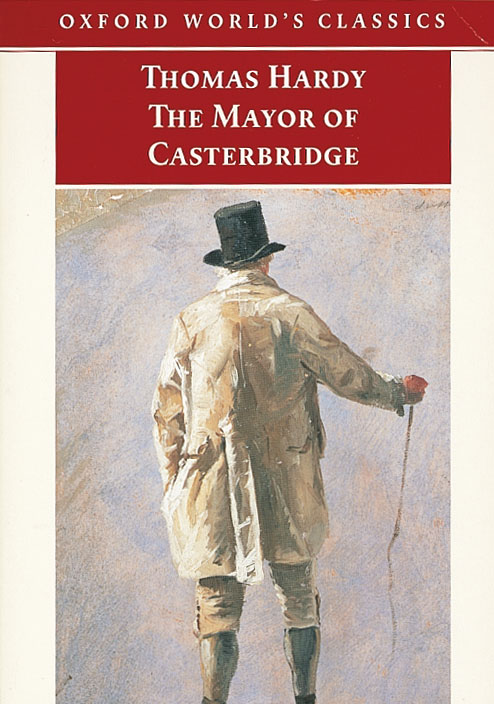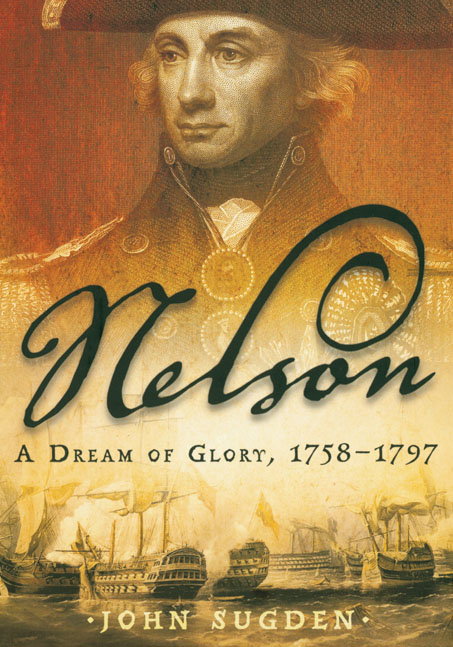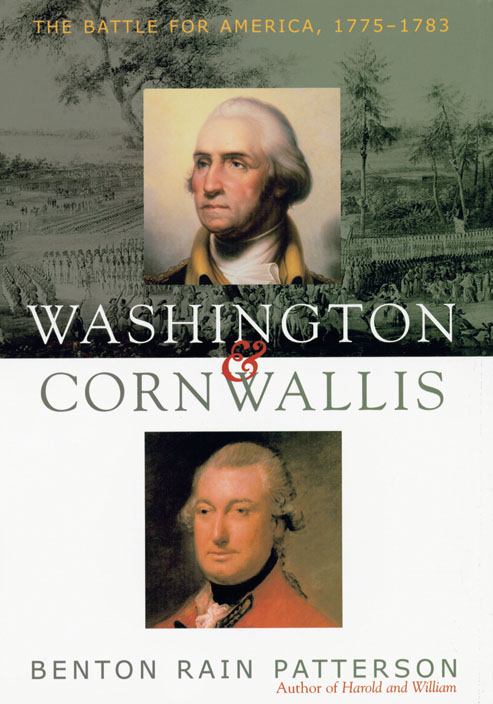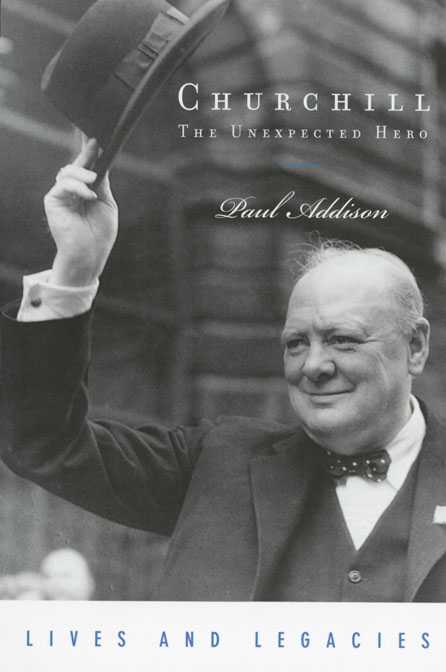
OVER THE YEARS, BH has reviewed an eclectic variety of new books on the history and culture of our green and pleasant land. There are classics on the bookshelf, however, that we would like to recall as well. Beginning with this issue, we will look at books many of our readers voted the 10 most British books of all time. We commence at number 10, with Thomas Hardy’s evocative tragedy of 19th-century Dorset, The Mayor of Casterbridge.
The Mayor of Casterbridge, by Thomas Hardy. Available in many editions, both soft and hardcover.
[caption id="BooksAboutBritain_img1" align="aligncenter" width="494"]

NO WRITER has captured the ethos and pathos of mid-19th-century agrarian life like Thomas Hardy. In a series of stories collectively known as the “Wessex novels,” Hardy movingly and painstakingly re-creates the life and people of the rural county of Dorset and its environs in the mid-1800s. “Wessex” is Hardy’s own descriptive noun for that portion of southwest England that used to make up the Saxon kingdom of Alfred the Great. Far From the Madding Crowd, Tess of the D’Urbervilles, Jude the Obscure and The Return of the Native are other well-known Hardy novels set in Wessex.
In Hardy’s fictionalized landscape, Casterbridge is his name for the Dorset market town of Dorchester. To this day, the countryside surrounding Dorchester is blanketed with dairy farms. Times have changed since 1850, though, and both mankind’s relationship with the land and the structure of society have seen a good deal of progress. The mid-1800s saw the introduction of machinery into farming—and the beginning of the end for a way of life that had existed unchanged for 400 years.
It was a world Hardy knew well. He was born just down the road from Dorchester in a thatch-roofed cottage. After a few years studying and pursuing architecture as a career in London, Hardy returned to Dorchester to write, and never left. The home he built on the outskirts of town, Max Gate, and his birthplace are now owned by the National Trust and open to visitors.
Against the backdrop of economic and social upheaval in rural Victorian England, Hardy tells stories of men and women caught up in lives that are molded impersonally by forces of human history that they do not understand. These stories do not have happily-everafter endings, however, and most of Hardy’s heroes and heroines are tragic.
The eponymous hero of The Mayor of Casterbridge, Michael Henchard, is such a tragic figure. From a dark and ignoble act, Henchard rises to prominence in the mercantile and political microcosm of Casterbridge. Yet the confluence of fate and the flaws in his own character bring upon a downfall from which there is no rise. Around Henchard a colorfully drawn cast of characters, rustic and urbane, pious and profane, bring to life England’s rural 19th century as Dickens’ characters did Victorian London and the underside of urban life.
Like all the greatest novelists in the days before moving images, Hardy excels in the craft of painting pictures with words. His descriptions of the Dorset countryside and the scenes against which the human drama is played are magically evocative yet economic. From Egdon Heath and Gray’s Bridge to the Maumbury Rings and the River Frome, the reader’s imagination is drawn not merely into the physical scene, but into the weather and the wind, the scent and the sound of water flowing in the Frome.
Hardy’s themes bring home the great questions of human existence. We recognize our lives in those of Henchard, his daughter Elizabeth Jane, Farfrae, Lucetta and the denizens of Casterbridge. At the same time, we confront questions of social justice and the ordering of society that are certainly still with us today.
The Mayor of Casterbridge made our top 10 list of the most British books for its rich depiction of pre-industrial rural life in England. It is a unique and important inclusion. After all, this was the life of the great majority of people through most of British history. The novel stands as one of the great classics of English literature. If it has been a while since you have stretched the imagination and the intellect with one of the “classics,” by all means seek out Thomas Hardy and let him take you on a Wessex adventure.
DANA HUNTLEY
Nelson: A Dream of Glory, 1758-1797,
by John Sugden, published by Henry Holt and Company, New York, 960 pages, hardcover $35.
[caption id="BooksAboutBritain_img2" align="aligncenter" width="453"]

FORMIDABLE WRITERS have been at work for 200 years publishing biographies of the hero of Trafalgar, Lord Horatio Nelson. But no one before has taken on the dual task, in such great detail and with such great insight and storytelling ability, of relating both the private and public lives of Europe’s greatest admiral, until John Sugden did.
In Nelson: A Dream of Glory, 1758-1797, Sugden investigates the spellbinding story of Nelson, the man and the commander. He employs a deft command of vast historical materials, establishing bases for Nelson the womanizer, the self promoter and, most significantly, the disciplined, fearless commander.
Sugden writes, “It is not necessary to regard Nelson as faultless or unique to appreciate his abilities.” Though not a faithful husband to Frances Herbert Nisbet (he took up most famously with Lady Emma Hamilton, who bore him a daughter, Horatia), Nelson did love often and, in his way, well. He loved Emma, Horatia, family and friends, and his men, whom he treated well enough and often admired, though he admired his own status equally well.
This volume of two parts (with a second volume still to come) focuses more attention on Nelson’s early years than previous biographies have done. The son of the Reverend Edmund Nelson and his wife Catherine—who died when he was 9—as a young boy Horatio did not suggest his future greatness to many people. He did, however, spring from a line that included his seafaring uncle, Captain Maurice Suckling, the famous commander of Triumph and Dreadnought, who was also comptroller of the Navy Board and a member of Parliament.
Because Nelson’s family was not wealthy and he saw no future in school, the motherless boy left home at age 12 to sail with Captain Suckling. By age 20, Nelson himself was a captain. His first ship was the two-masted brig Badger. Nelson eventually fought Spanish, American and French adversaries courageously and effectively. He would lose his vision in one eye and his right arm along the way, but the former sickly, pint-size boy would become a tenacious sea commander well in advance of Trafalgar, which was fought in 1805 against the French-Spanish fleet off Cape Trafalgar in southern Spain. That pivotal sea battle powerfully helped end Napoleon’s dream of crossing the Channel and taking England.
[caption id="BooksAboutBritain_img3" align="aligncenter" width="493"]

The numerous monuments and memorials to Nelson are today epitomized by Nelson’s Column in Trafalgar Square, London. Even the great obliterator of Napoleon’s army in 1815, the Duke of Wellington, did not evoke as much love from the British people. Wellington was better rewarded by the British government and respected, but Nelson has long been known as the “People’s Champion.”
Although there is a mountain of primary source materials for Nelson scholars to review, select and write up, plus prodigious secondary materials, Sugden, so far, has met the challenge by contending superbly with all of it. This volume includes copious endnotes, a useful glossary and maps and leaves readers thirsting for the second volume, which we hope will not be long in coming.
DAVID J. MARCOU
Washington and Cornwallis: The Battle for America, 1775-1783, by Benton Rain Patterson, published by Taylor Trade Publishing, Lanham, Md., 358 pages, hardcover $24.95.
BENTON Rain Patterson does an admirable job relating the defeats and victories of American General George Washington and British General Charles Cornwallis in Washington and Cornwallis: The Battle for America, 1775-1783. This fine narrative follows the two men through the American Revolutionary War with well-researched detail and an abundance of quotes from participants’ correspondence, diaries and journals. Firsthand details lend immediacy to pivotal events, including major offensives such as Washington crossing the Delaware River on Christmas Day 1776 and the following successful raid on British-held Trenton, N.J. During that encounter Washington’s rebel army surprised the Hessian troops there, and one of the general’s aides recorded: “Looking down the road, I saw a Hessian running out from the house. Three or four others came out with their guns. Two of them fired at us, but the bullets whistled over our heads. The next moment we heard drums beat and a bugle sound, and then from the west came the boom of a cannon. General Washington’s face lighted up instantly, for he knew that it was one of Sullivan’s guns.”
Patterson’s research also uncovered less spectacular, but just as crucial, occurrences. For instance, the course of the war, if not the outcome, could have been affected as a result of a chance encounter related by British Major Patrick Ferguson, a 36-year-old Scotsman who late in 1777 came across a man on horseback “dressed in dark green or blue, mounted on a bay horse, with a remarkably large cocked hat.” The man was accompanied by a hussar. The two lone riders passed very close to Ferguson’s position, and the Scotsman called to them, but the man in dark colors “after looking at me, proceeded.” Ferguson again tried to get the men to stop, but they continued on. The British officer was close enough to have “lodged half-adozen balls in or about him before he was out of my reach. . . .But it was not pleasant to fire at the back of an unoffending individual....” Ferguson learned the next day that General Washington had been in the vicinity, attended only by a French officer in hussar dress. The author concedes that the identity of the man in dark colors has long been in dispute, yet the anecdote makes fascinating reading.
In the same manner, Patterson covers all the critical clashes such as the siege of Boston, the fall of New York, the American victories at Princeton and Saratoga, the ordeal at Valley Forge, the plot to depose Washington and Cornwallis’ rampage through the Carolinas.
The flowing narrative is a pleasure to read. However, the book contains no introduction to give insight to any thesis the author may have, nor does it include a conclusion to tie all the elements together. Also, there is no real comparing or contrasting of these two fascinating individuals. For the casual read, this is a fine book, but if one wishes for an in-depth study, it would be best to look elsewhere.
ALLYSON PATTON
[caption id="BooksAboutBritain_img4" align="alignright" width="446"]

Churchill:The Unexpected Hero, by Paul Addison, published by Oxford University Press, Oxford, 308 pages, hardcover $25.
IT IS NOT always easy for those of us raised on the image of the cigar-chewing, defiant wartime hero with his fingers split in a V-for-victory sign to keep in mind that this now-accepted stereotype was crafted late in Winston Churchill’s career. Those who knew and governed alongside the young Churchill, but who departed this world before the 1940s, might be very surprised to learn that later biographers regard him as a savior.
This latest study of Churchill’s career re-examines the policies and decisions that earned him a less lofty reputation years before World War II reshaped perceptions of the statesman. For most of his political life, he was known as a man of unquestioned genius who was nevertheless impulsive, egotistical and a shameless opportunist. One critic, for example, wrote: “He is a man of truly brilliant gifts, but you cannot depend upon him. His love for danger runs away with his discretion; his passion for adventure makes him forget the importance of the goal.”
Elected a Conservative MP, he later crossed the aisle to join the ranks of the Liberal opposition at the cost of the prolonged resentment of his former allies and the lingering mistrust of his new comrades. As home secretary, his heavyhanded response to demonstrations by suffragettes and striking Welsh miners marked him as a dangerous antidemocratic zealot. In addition, his conviction that Britain’s moral and intellectual superiority validated its rule in India made him one of the last of the Victorian imperialists and, some would say, a bigot.
Many of those same detractors thought his fascination with military exploits constituted an especially dangerous preoccupation. “We are not meant to find peace in this world,” Churchill declared in 1899. “The spirit of life cannot exist without effort. Destroy the rivalries of man and nations and you will have destroyed all that makes for betterment and progress on earth.” This was a sentiment that men both then and now might hotly debate. Nevertheless, when it came to the martial arts, he was an amateur, and his forays into strategy more often than not yielded mixed results. As First Lord of the Admiralty during World War I, he seemingly went from disaster to disaster, and the legacy of the Allied defeats at Antwerp and Gallipoli seemed to bring his political fortunes to an abrupt end.
Only the utter failure of the policy of appeasement in 1939 rescued Churchill from the political scrap pile. It was not so much that people reassessed his character, or that he refined his abrasive and impulsive manner, but rather that even his critics recognized that his self-confident, almost arrogant belief in his own and Britain’s greatness was the only thing that could sustain the nation through a long hard war. If Churchill was the anvil on which victory was forged, the war itself was the forge in which Churchill’s reputation was made. It is as if he had been made and nurtured specifically for this one crisis.
While taking nothing away from this great contribution to the cause of freedom, Addison’s study is a reminder of just how surprisingly fine the line between an outcast and a hero can be, and that oftentimes great men are as much products of their own time as shapers of it.
BRUCE HEYDT





Comments